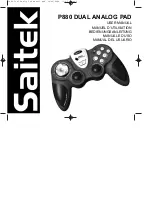
DR-1 Plastic Fluid Regulator - Safety
3
AREA
Tells where hazards
may occur.
HAZARD
Tells what the hazard is.
SAFEGUARDS
Tells how to avoid the hazard.
Electrical
Equipment
High voltage equipment is utilized.
Arcing in areas of flammable or
combustible materials may occur.
Personnel are exposed to high
voltage during operation and
maintenance.
Protection against inadvertent arc-
ing that may cause a fire or explosion
is lost if safety circuits are disabled
during operation.
Frequent power supply shut-down
indicates a problem in the system
which requires correction.
An electrical arc can ignite coating
materials and cause a fire or explo-
sion.
The power supply, optional remove control cabinet,
and all other electrical equipment must be located
outside Class I or II, Division 1 and 2 hazardous areas.
Refer to NFPA-33.
Turn the power supply OFF before working on the
equipment.
Test only in areas free of flammable or combustible
material.
Testing may require high voltage to be on, but only as
instructed.
Production should never be done with the safety cir-
cuits disabled.
Before turning the high voltage on, make sure no objects
are within the sparking distance.
Explosion Hazard /
Incompatible
Materials
Halogenated hydrocarbon solvents
for example: methylene chloride
and 1,1,1,-Trichloroethane are not
chemically compatible with the
aluminum that might be used in
many system components. The
chemical reaction caused by these
solvents reacting with aluminum
can become violent and lead to an
equipment explosion.
Aluminum is widely used in other spray application
equipment - such as material pumps, regulators, trig-
gering valves, etc. Halogenated hydrocarbon solvents
must never be used with aluminum equipment during
spraying, flushing, or cleaning. Read the label or data
sheet for the material you intend to spray. If in doubt as
to whether or not a coating or cleaning material is com-
patible, contact your material supplier. Any other type
of solvent may be used with aluminum equipment.
Improper operation or maintenance
may create a hazard.
Personnel must be properly trained
in the use of this equipment.
Personnel must be given training in accordance with
the requirements of NFPA-33.
Instructions and safety precautions must be read and
understood prior to using this equipment.
Comply with appropriate local, state, and national codes
governing ventilation, fire protection, operation main-
tenance, and housekeeping. Reference OSHA, NFPA-33,
and your insurance company requirements.
General Use and
Maintenance
LN-9228-00.3







































